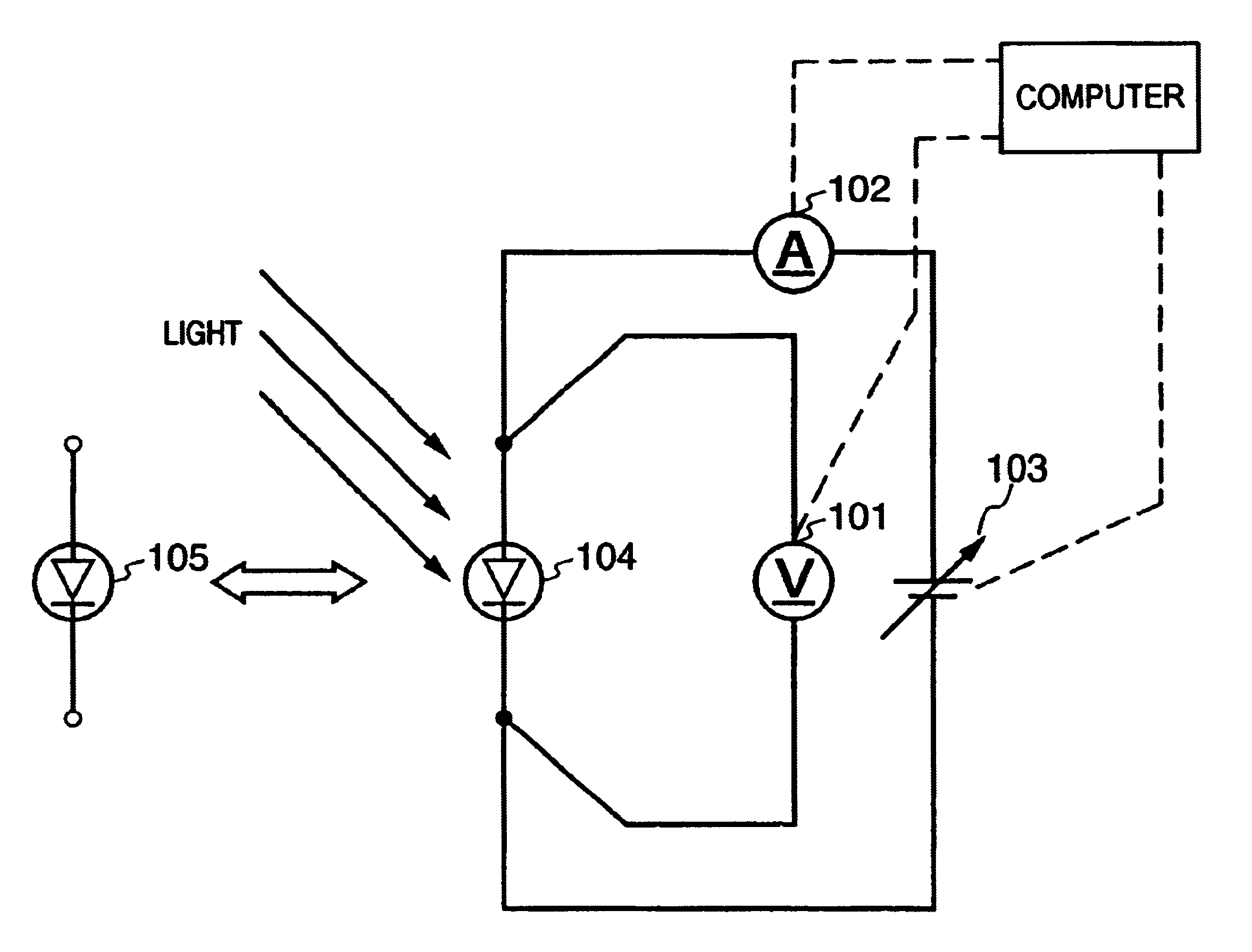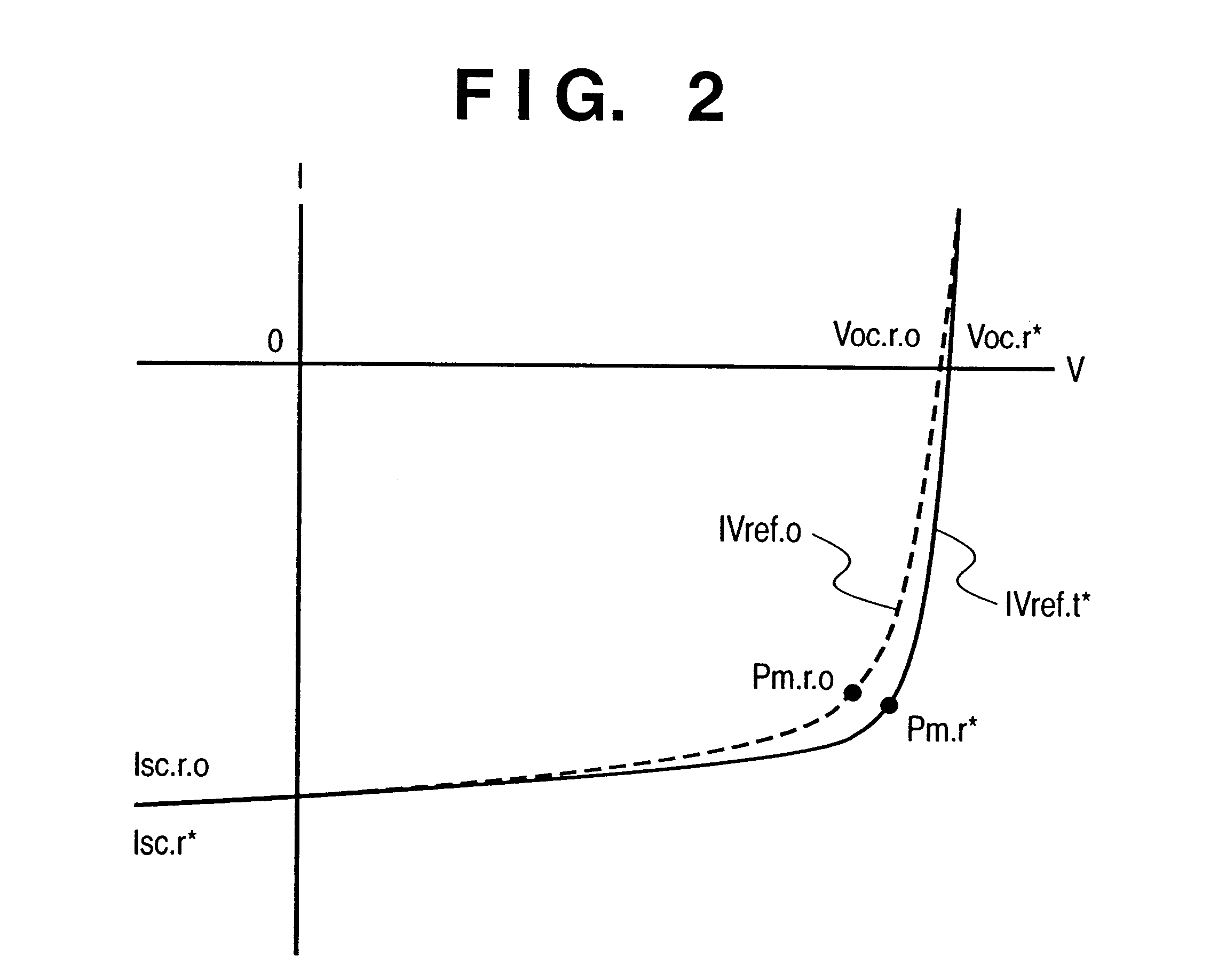Method and apparatus for measuring photoelectric conversion characteristics
a technology of photoelectric conversion and measurement method, which is applied in the direction of individual semiconductor device testing, photovoltaic monitoring, instruments, etc., can solve the problems of unstable manufacturing yield, inability to guarantee the maximum power of a photoelectric conversion device to be delivered, and inevitably decrease the manufacturing yield, so as to achieve accurate measurement of photoelectric conversion characteristics and low cost
- Summary
- Abstract
- Description
- Claims
- Application Information
AI Technical Summary
Benefits of technology
Problems solved by technology
Method used
Image
Examples
example 1
The output characteristics of a triple solar cell having a three-layered structure including a top cell with a pin junction using amorphous silicon (to be referred to as “a-Si” hereinafter) for an i-layer, a middle cell with a pin junction using amorphous silicon germanium (to be referred to as “a-SiGe” hereinafter) for an i-layer, and a bottom cell with a pin junction using a-SiGe for an i-layer were measured by a known pulse-light-type solar simulator using a xenon lamp as a light source.
The triple solar cell had a size of about 1 cm×1 cm formed on a single stainless steel substrate and was in a single unit state before cells were connected in series or in parallel. No surface protective layer was formed. The solar simulator had an effective irradiation area of about 10 cm×10 cm. The time variation ratio of the irradiance was ±1% or less, and the positional variation in irradiance was ±2% or less.
As a power supply 103, a known bipolar power supply was used. The voltage was swept b...
example 2
The same sample cell as in Example 1 was measured in accordance with the same procedure as in Example 1. FIG. 9 shows results obtained by correcting the measurement results not by equation (9) but by equation (10). FIG. 10 shows results obtained by dividing the results of Example 2 before and after correction shown in FIG. 9 by the values shown in FIG. 7 and representing the increase / decrease in each value by percentage. As is apparent from the results shown in FIG. 10, even with the measuring method of this embodiment using equation (10), accurate measurement results almost the same as those by the multi-source method can be obtained.
example 3
The output characteristics of a double solar cell having a two-layered structure including a top cell with a pin junction using a-Si for an i-layer and a bottom cell with a pin junction using micro-crystallite silicon (to be referred to as “μc-Si” hereinafter) for an i-layer were measured by a known solar simulator using a xenon lamp as a light source.
The double solar cell was a submodule which had a size of about 25 cm×18 cm formed on a single stainless steel substrate and was in a single unit state before submodules were connected in series or in parallel. No surface protective layer was formed. The solar simulator had an effective irradiation area of about 130 cm×80 cm. The positional variation in irradiance was ±3% or less, and the positional variation in irradiance within the area of the submodule was ±1.5% or less.
As a power supply 103, a known electronic load was used. The voltage was swept by a personal computer. As voltage and current detectors 101 and 102, a combination of...
PUM
 Login to View More
Login to View More Abstract
Description
Claims
Application Information
 Login to View More
Login to View More - R&D
- Intellectual Property
- Life Sciences
- Materials
- Tech Scout
- Unparalleled Data Quality
- Higher Quality Content
- 60% Fewer Hallucinations
Browse by: Latest US Patents, China's latest patents, Technical Efficacy Thesaurus, Application Domain, Technology Topic, Popular Technical Reports.
© 2025 PatSnap. All rights reserved.Legal|Privacy policy|Modern Slavery Act Transparency Statement|Sitemap|About US| Contact US: help@patsnap.com



